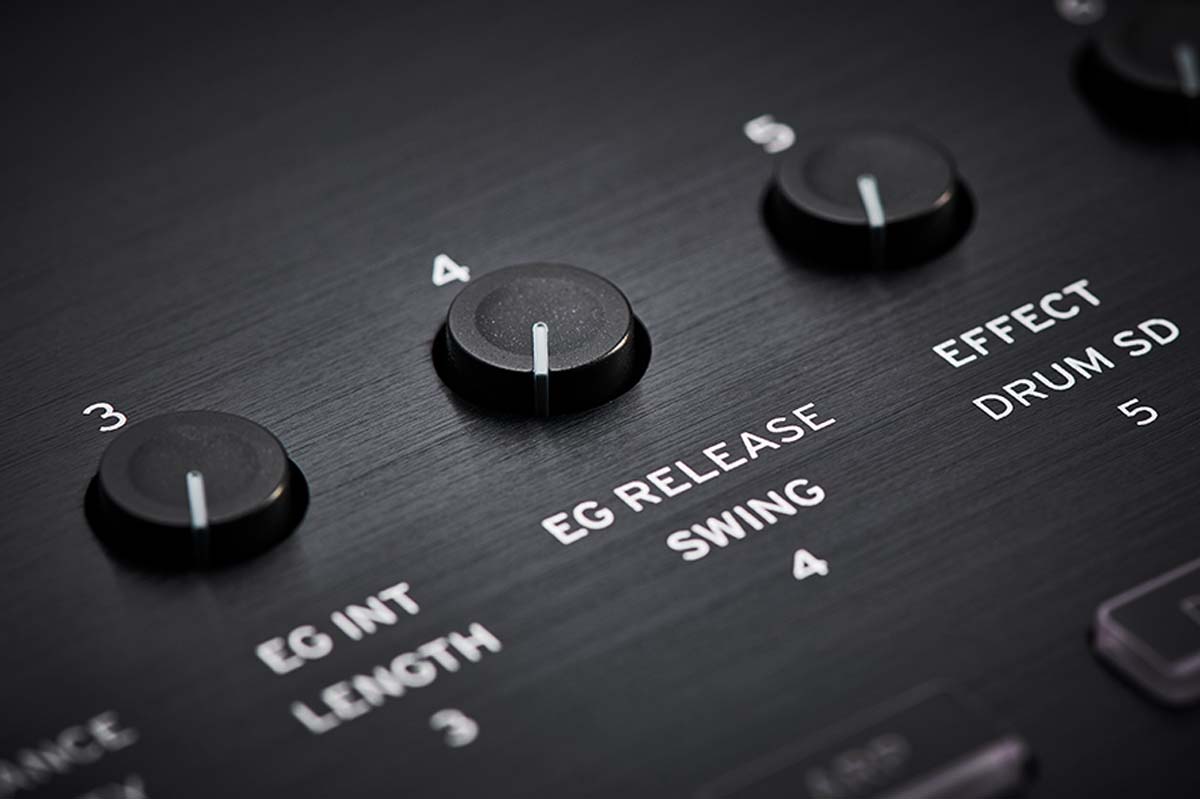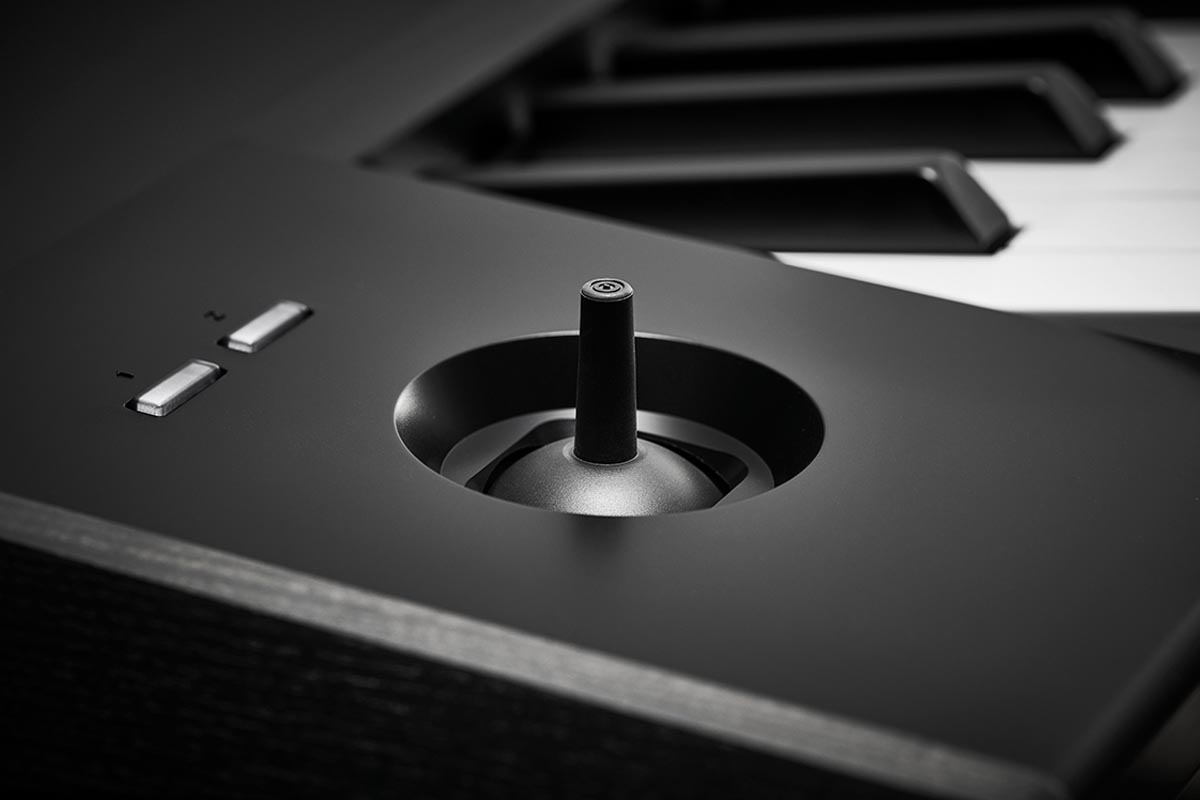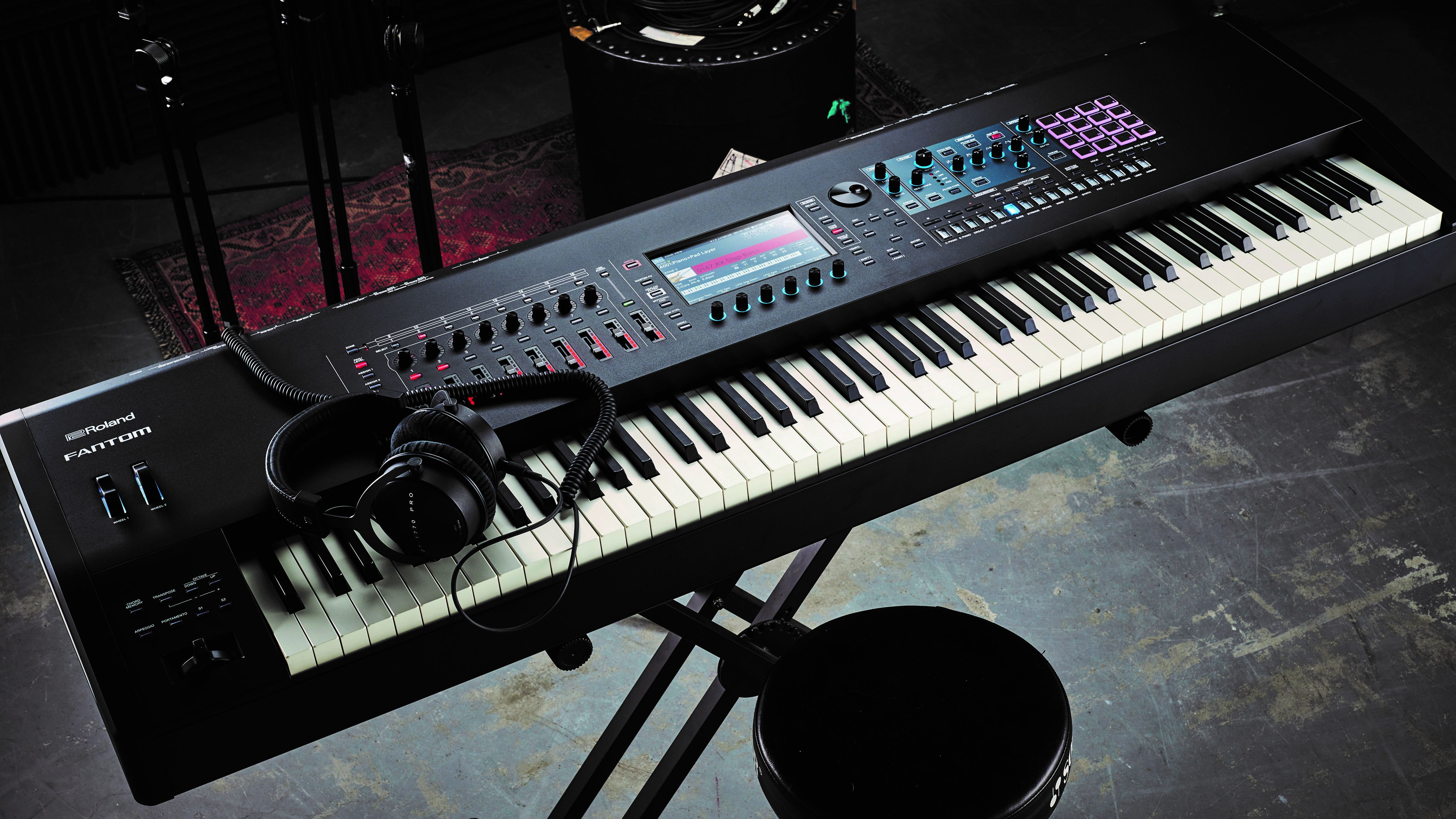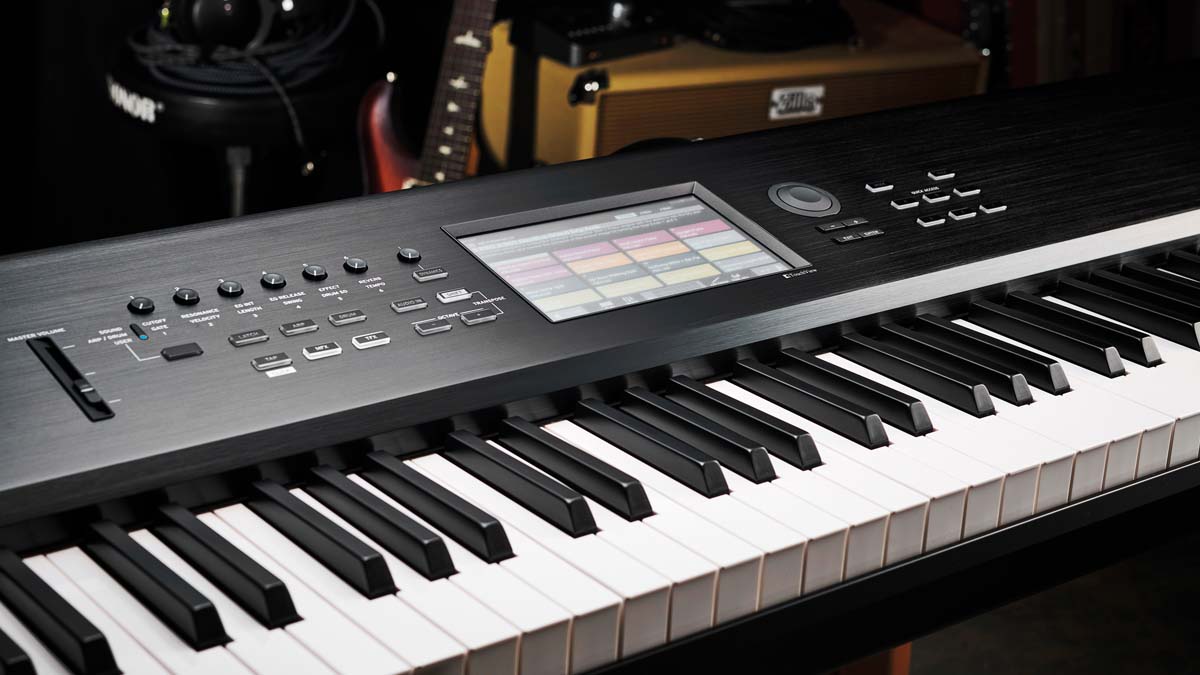MusicRadar Verdict
A freshened-up, more affordable Kronos sibling which ticks most, if not all, boxes. A great instrument for serious giggers.
Pros
- +
2000+ inspiring sounds and nine different synth engines.
- +
Powerful 32-track sequencer (16 MIDI and 16 audio tracks).
- +
Excellent, weighted hammer-action keybed is a joy.
Cons
- -
Long startup time – takes almost three minutes to boot up.
- -
Touchscreen interface can be complex and fiddly.
- -
Lacks aftertouch – strange on such an upmarket machine.
MusicRadar's got your back
What is it?
Since Korg’s M1 first spearheaded the keyboard workstation revolution in 1988, it’s fair to say things have moved on a bit, a statement borne out no more clearly than by their newest arrival, the Nautilus.
Available in 61, 73 and 88-key versions, the Nautilus slots into Korg’s product range below the flagship Kronos, offering a more streamlined feature set at a more affordable price.
That’s not to say the Nautilus is lacking power: it packs the same impressive array of nine different synth engines that you’ll find in the Kronos. In fact, the main differences between Kronos and Nautilus seem to be a more sparse front panel and the replacement of Kronos’s Korma arpeggiator with a less complex model.
On the plus side, we get a smattering of new sounds and tweaks to the central touchscreen interface. All three sizes of the Nautilus feature velocity-sensitive keybeds, as you’d expect, but curiously no aftertouch, unlike the Kronos.
We tested the 88-key Nautilus, which has the same internal spec as the two smaller models but boasts a fully-weighted, hammer-action RH-3 keybed sourced from Korg’s premium digital piano range. It’s a beautiful instrument to look at and to play, with its chamfered, wooden end cheeks and acres of brushed black metal, but the tradeoff is its weight.
The synth engines are modelled on Korg’s legendary MS-20 monosynth, plus their equally iconic Polysix six-voice analogue synth, while the new AL-1 modern analogue synth engine has been engineered from scratch
Lighter than some competitors but still tipping the scales at a whopping 23kg, it makes it a two-person job if you’re thinking of moving it around safely. The keyboard is weighted heavier at the low end than at the top to emulate the action of an acoustic piano.

The rear panel sports no fewer than six audio outputs, three MIDI DIN sockets (In/Out/Thru), three foot pedal inputs for damping and expression pedals and footswitches, two audio inputs for sampling and recording, and two USB ports – one for connecting MIDI controllers or QWERTY keyboards and another that sends and receives MIDI and two channels of audio.
The synth engines are modelled on Korg’s legendary MS-20 monosynth, plus their equally iconic Polysix six-voice analogue synth, while the new AL-1 modern analogue synth engine has been engineered from scratch for more contemporary synth sounds. You’ll also find the STR-1 plucked string module, HD-1 sample-based engine and MOD-7 FM-based synth engine in there too.
The central 8-inch (800 x 480 pixel) colour TouchView resistive display has gesture control, enabling you to touch and drag items like, say, opening and closing the lid of your grand piano. Unlike a mobile phone screen, it needs a firm, positive pressure to respond.
It generally works well despite a small degree of lag, although it can sometimes be a bit hit and miss, and with such a lot of information to convey, many of the controls are small enough that they can easily be mis-hit if you don’t judge the strike angle just right.

Performance and verdict
Overall, the controls are laid out logically and the architecture of the Nautilus will be immediately familiar to Korg workstation fans, retaining the same Combi, Program and Sequence mode terminology they’ve used ever since the M1.
Program refers to individual sounds (of which there are more than 2000 to choose from), while Combis are stacks of up to 16 programs that can be split, layered and overlapped to your taste.
A separate dynamics control, which offers direct tailoring of the current sound’s velocity response on the fly, is perfect if you want your sound to cut through onstage without the need to pound the keys overly hard
Sequences are complete songs created using the onboard MIDI sequencer and audio recorder and stored on the internal 60GB SSD. This provides 16 MIDI and 16 audio tracks, which are tapped into via the twin audio inputs on the back panel.
Meanwhile, the Set List page lets you assemble up to 128 combis into 4 x 4 grids to be called up, per song, at the flick of a button.
Other thoughtful gig-centric details include the ability to enter large-font text into a 512-character note field to be displayed prominently above the setlist, a feature called SST (Smooth Sound Transition) that enables sounds to be switched without reverb and release tails cutting off abruptly, plus an onboard EQ to let you tailor the sound of your Nautilus’ output to the environment you’re playing in.

On the front panel, six real time rotary controls can be used during performance to adjust parameters like filter cutoff and effect depth.
Uniquely, you can push these down so that they click into place almost flush with the casing when not in use, then click again to bring them back up when required. The knobs are a little plasticky and lacking in grip, but useful nevertheless.
A separate dynamics control, which offers direct tailoring of the current sound’s velocity response on the fly, is perfect if you want your sound to cut through onstage without the need to pound the keys overly hard, a useful addition on a performance keyboard.
Pia-no worries, mate
If the driving force behind the decision to go for the 88-key version is the piano sounds, you won’t be disappointed. The 88-key Nautilus delivers these in spades, with one of its nine synth engines – the SGX-2 – devoted entirely to premium sampled pianos.
As well as the excellent German and Italian grand models, there are also some upright piano programs making their debut here, along with a new ‘small grand’ and some ‘prepared’ piano sounds. In general, the piano sounds are rich, full and detailed, with plenty of scope to adjust damper and string resonance and pedal noise.
New for Nautilus are the Dry/Amb Grand Piano programs, sampled using both close and ambient microphones, whose signals can be blended directly from the touchscreen for a more or less ambient sound. Similarly, the EP-1 engine serves up satisfying Rhodes and Wurlitzer sounds, while organ tones are capably handled by the dedicated CX-3 engine.

• Roland Fantom-8
An expensive but versatile powerhouse with bags of connectivity, the Fantom 8 is Roland’s top-of-the-range workstation keyboard. Offering heaps of controls and multi-channel audio streaming over USB, the Fantom is well built with a clear, snappy touchscreen.
• Yamaha Montage 8
The Montage range is Yamaha’s flagship performance keyboards, with the Montage 8 the weighted 88-key version. Even heavier than the Nautilus at 29kg, it features high build quality and stunning sounds but lacks a dedicated tonewheel organ engine, VA engine, direct sampling and deep sequencer.
It’s clear that the Nautilus is primarily intended to be a performance instrument. Whether you’re a hobbyist, pro or semi-pro keyboard entertainer or are simply looking for something to noodle around on at home without having to hook up to a computer, the Nautilus should be high up on your list, especially if you’ve been lusting after a Kronos for a while.
It sounds fantastic, plays beautifully and, with some effort, the onboard sequencer can be used to produce an entire finished song from scratch. And with a name like Nautilus, it should go down well with everyone.
MusicRadar verdict: A freshened-up, more affordable Kronos sibling which ticks most, if not all, boxes. A great instrument for serious giggers.

The web says
“On the sequencing side, it’s a little anachronistic to build such a thing into a synthesizer given that these days we carry computers in our pockets that are more powerful than what was available when Korg first minted their workstation template. But the sequencer isn’t without its uses. However, it’s on the synthesis front that the Nautilus does its best work, offering astonishing flexibility, superb sound quality, and brilliant sound design throughout.“
MusicTech
Hands-on demos
Sweetwater
Korg
Bonners Music
Woody Piano Shack
Specifications
- KEY FEATURES: Nine synth engines, over 2000 programs,16 track MIDI sequencer, 16 track Audio recorder, 8-inch touchscreen
- DIMENSIONS: 1437 x 387 x 139mm (88-key), 1227 x 386 x 116mm (73-key), 1062 x 386 x 116mm (61-key)
- WEIGHT: 23.1kg (88-key), 14.6kg (73 key), 13.0kg (61 key)
- CONTACT: Korg
Dave has been making music with computers since 1988 and his engineering, programming and keyboard-playing has featured on recordings by artists including George Michael, Kylie and Gary Barlow. A music technology writer since 2007, he’s Computer Music’s long-serving songwriting and music theory columnist, iCreate magazine’s resident Logic Pro expert and a regular contributor to MusicRadar and Attack Magazine. He also lectures on synthesis at Leeds Conservatoire of Music and is the author of Avid Pro Tools Basics.
“Excels at unique modulated timbres, atonal drones and microtonal sequences that reinvent themselves each time you dare to touch the synth”: Soma Laboratories Lyra-4 review
“I used everything I knew about music”: How Green Day exceeded expectations with their most ambitious song
YouTube just added AI tools that makes musicians, library music and video editors redundant











